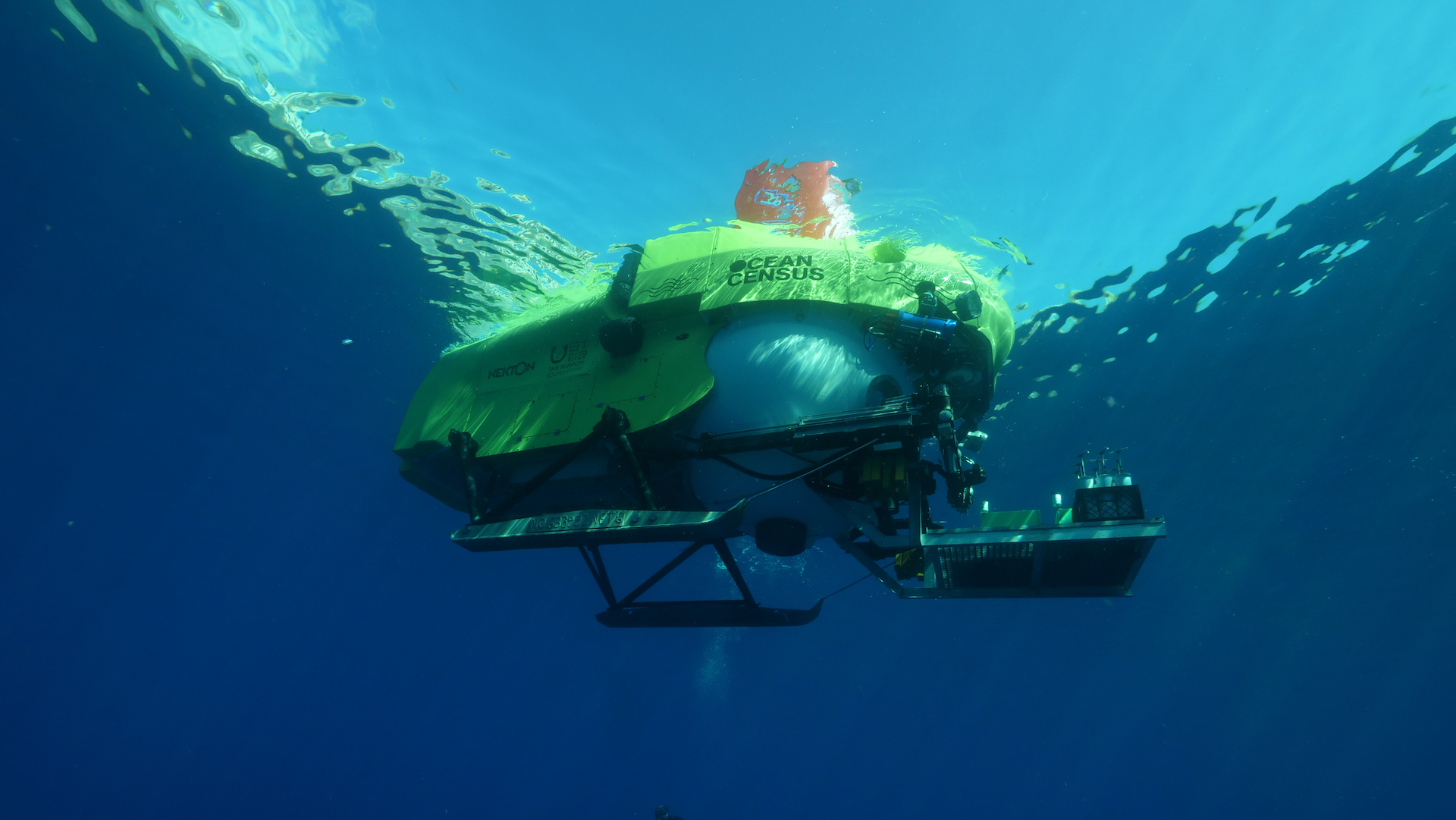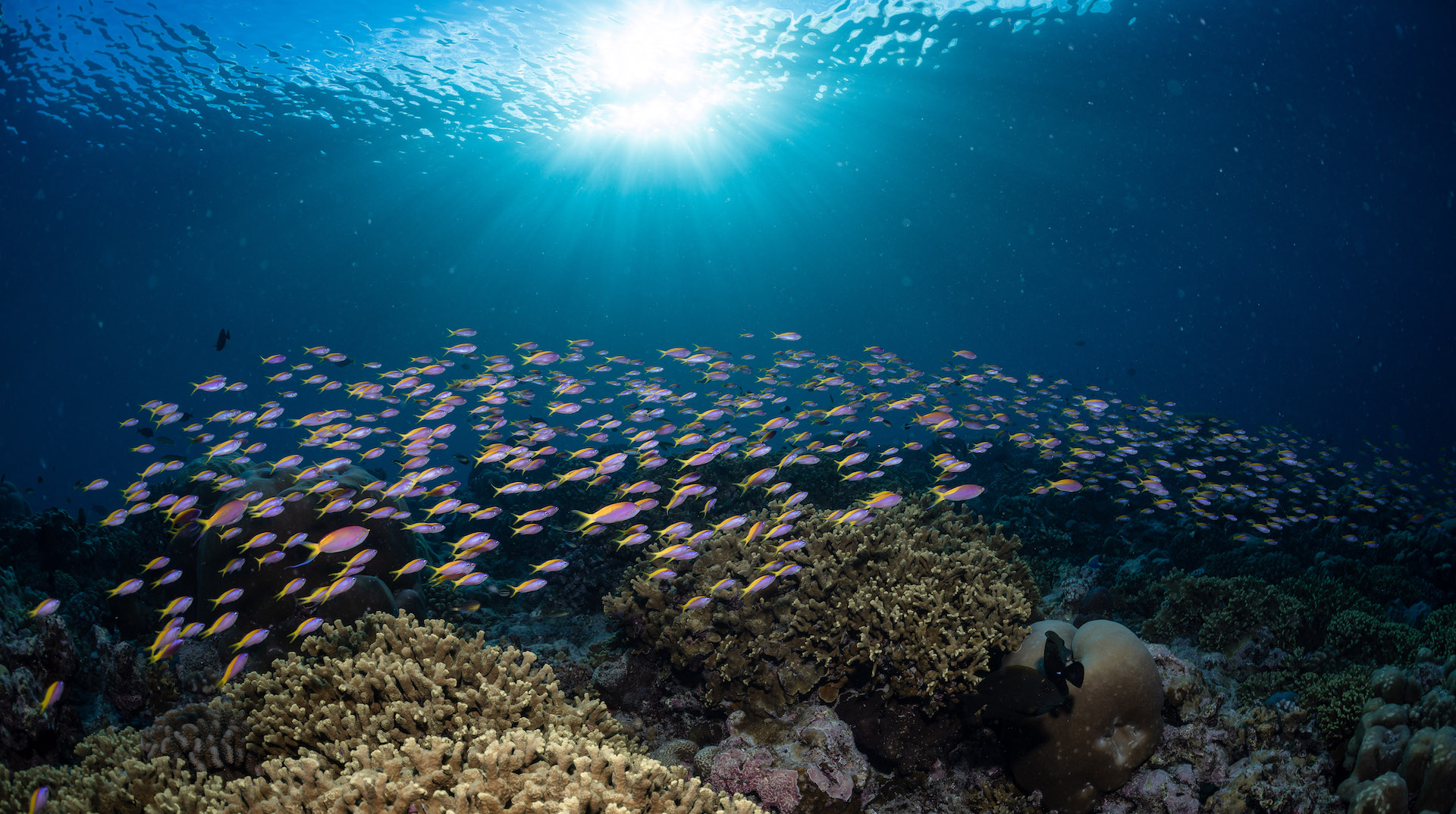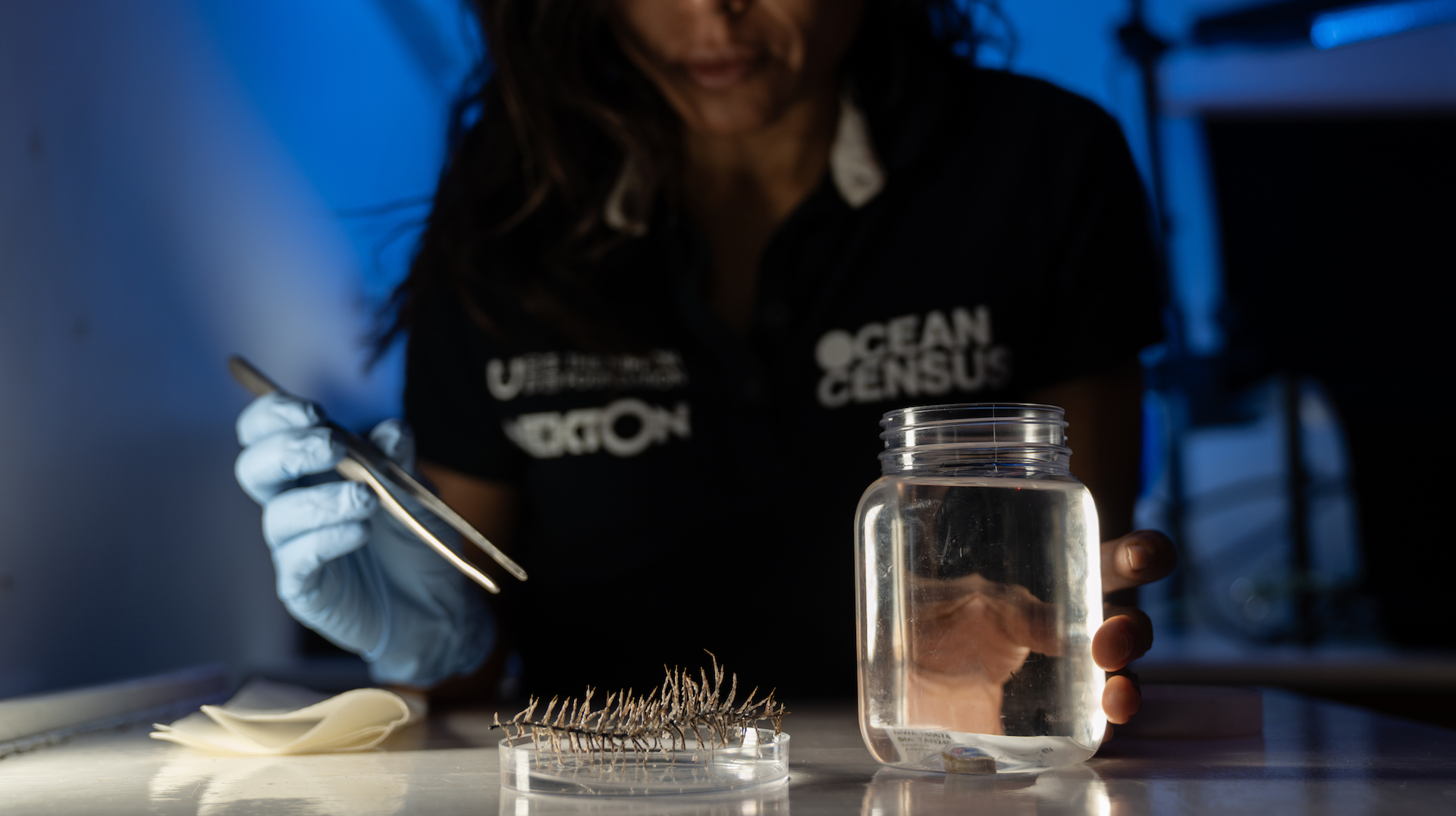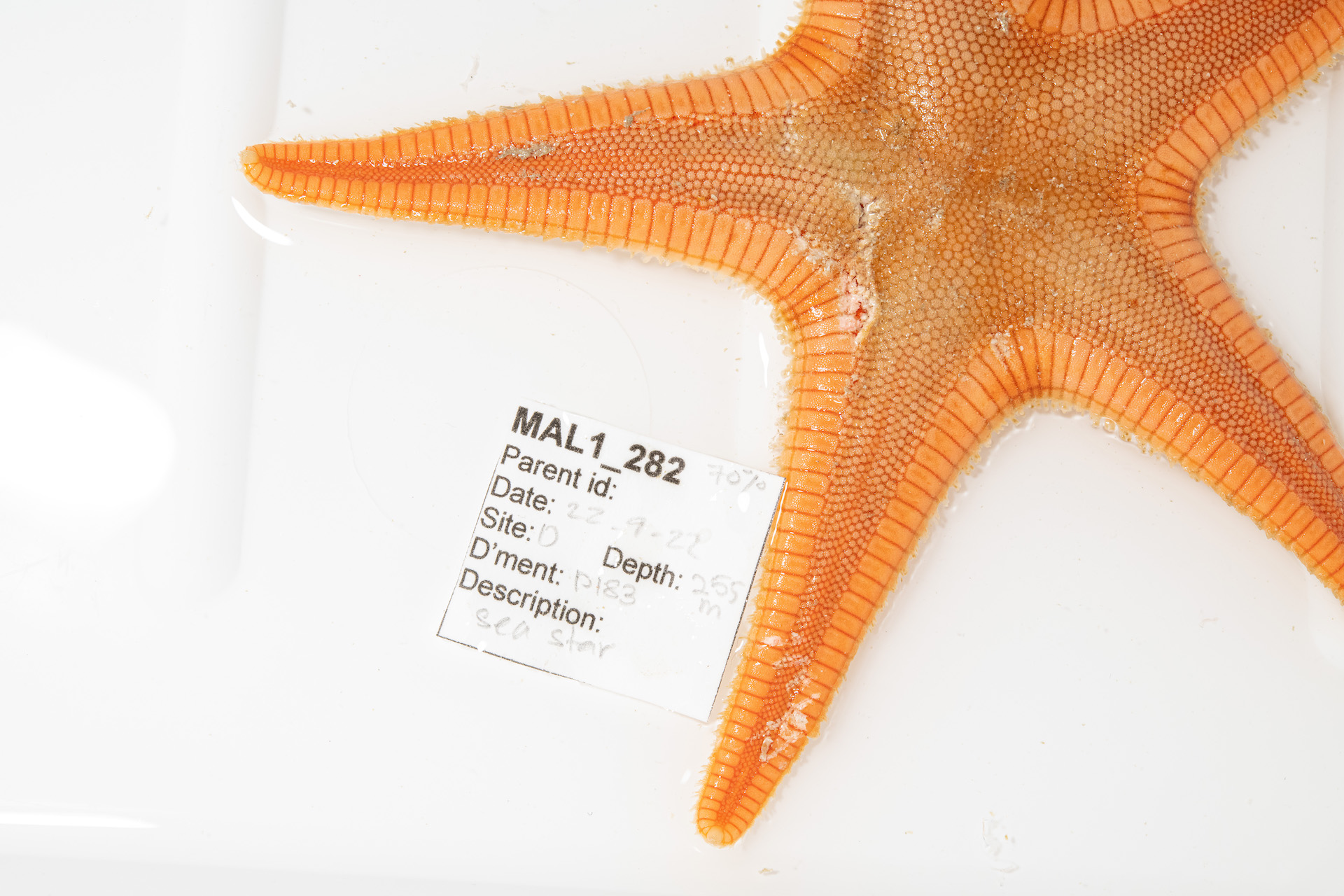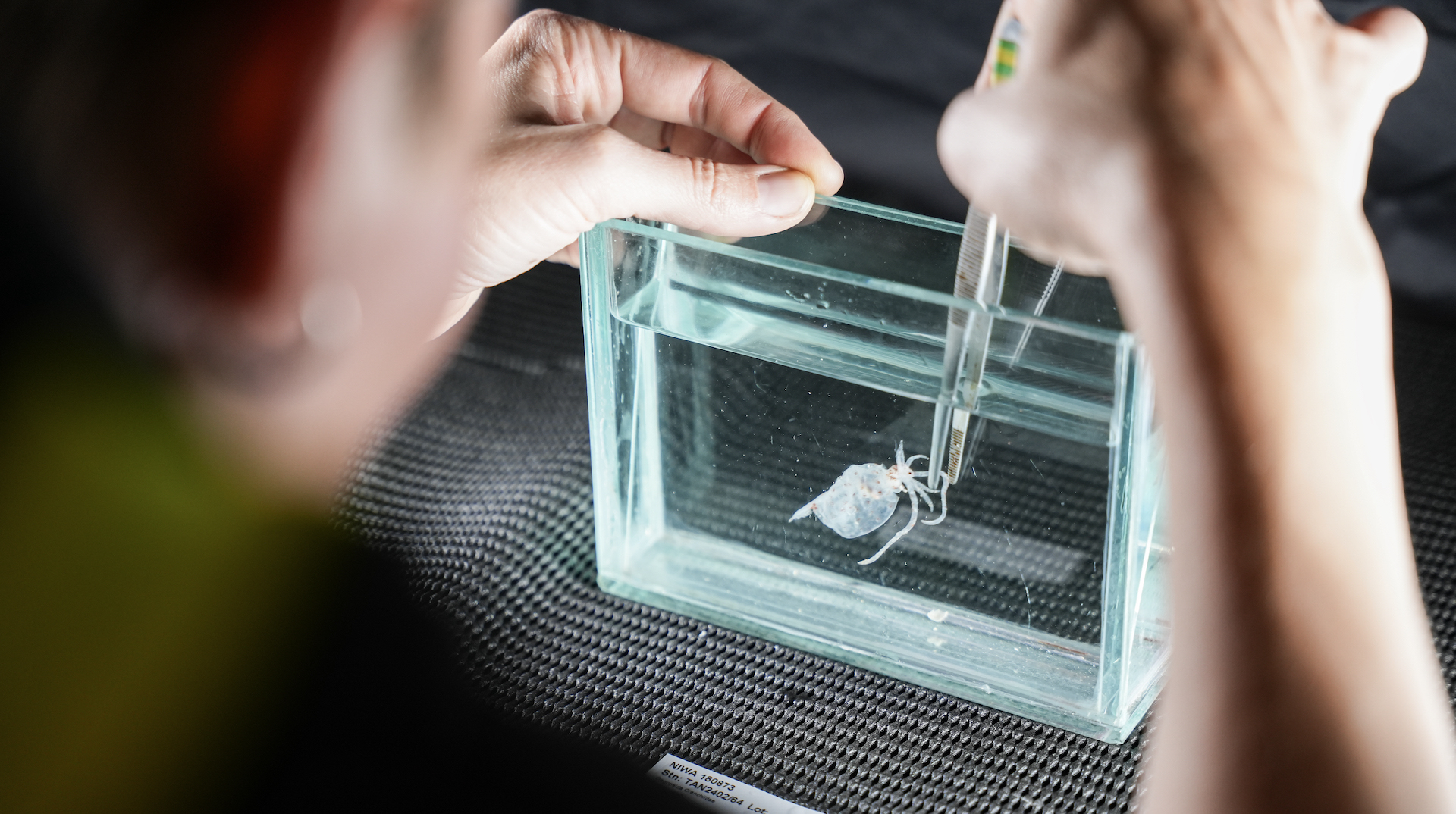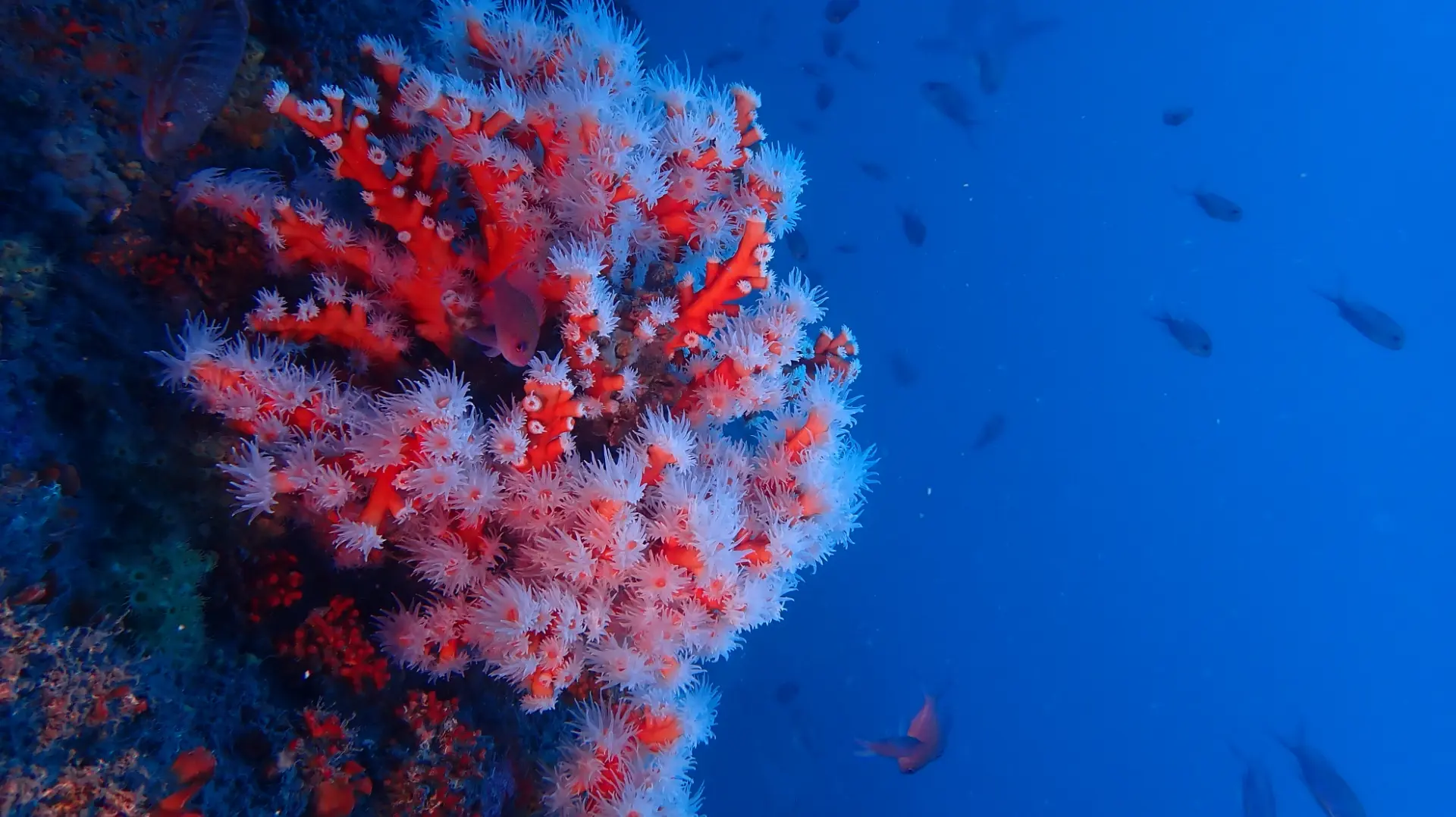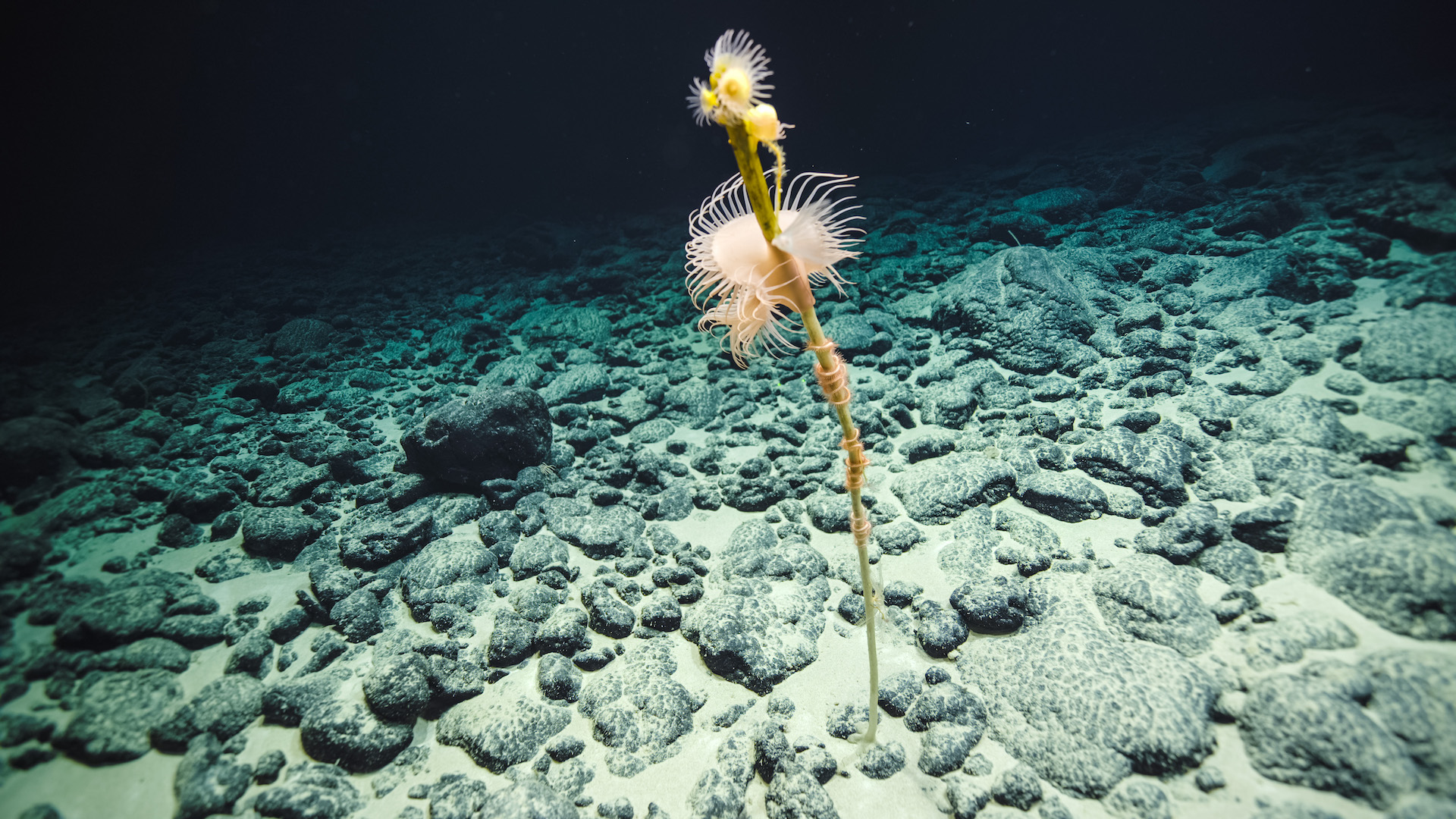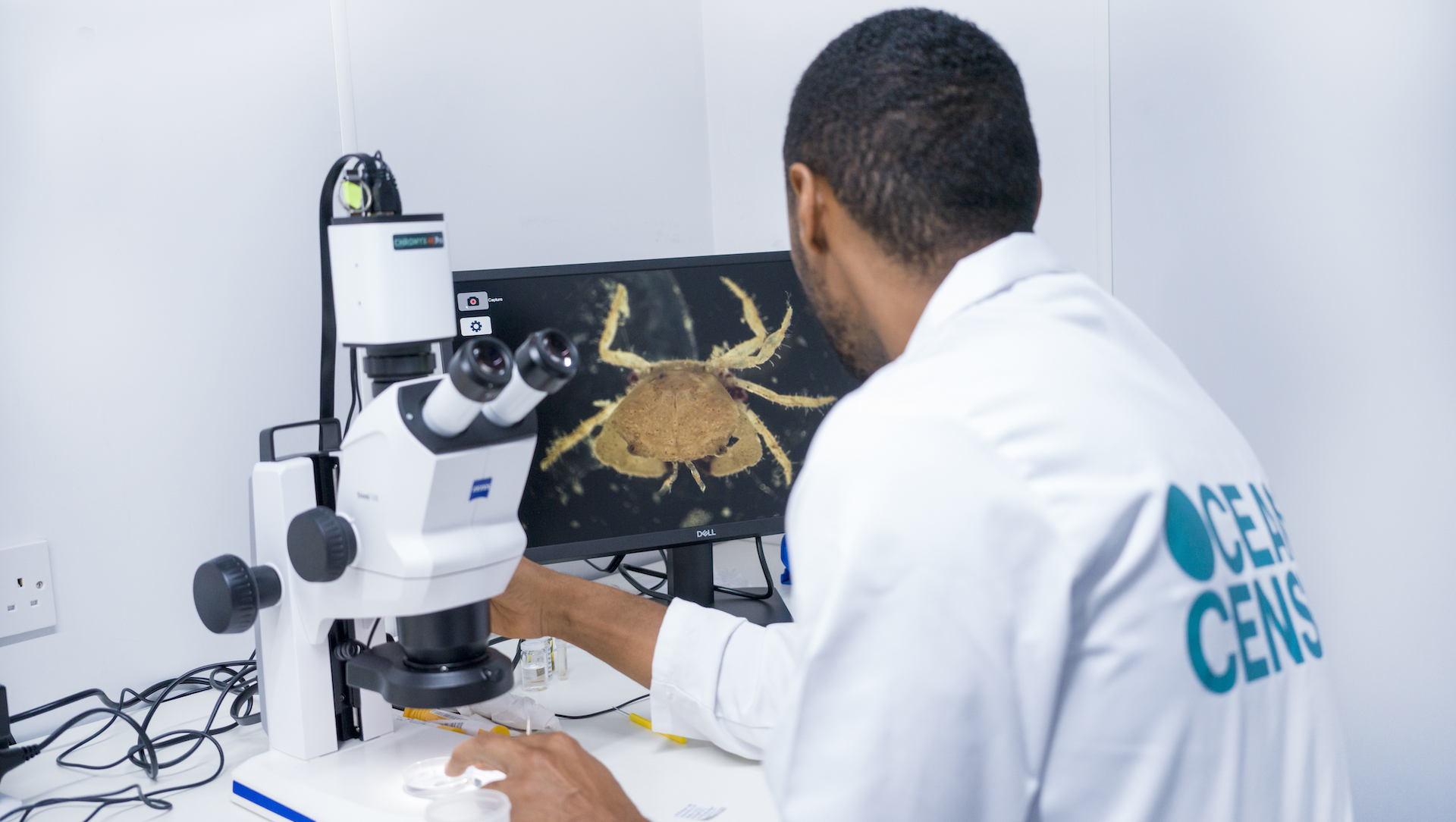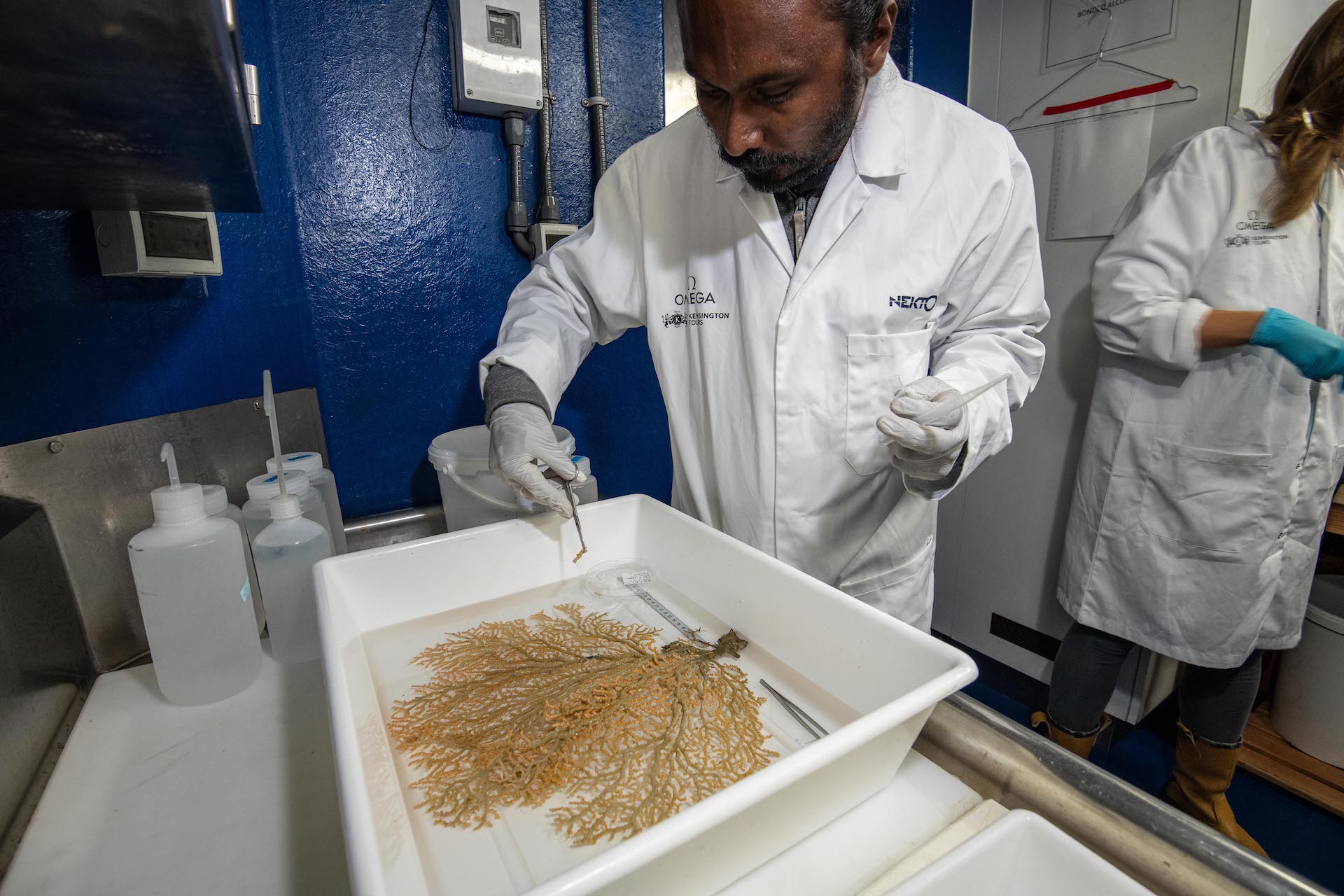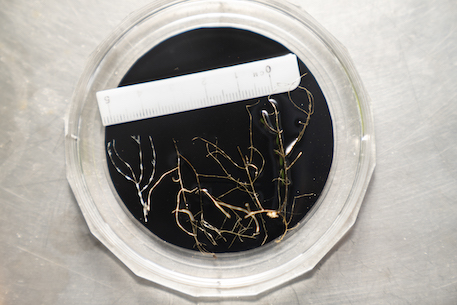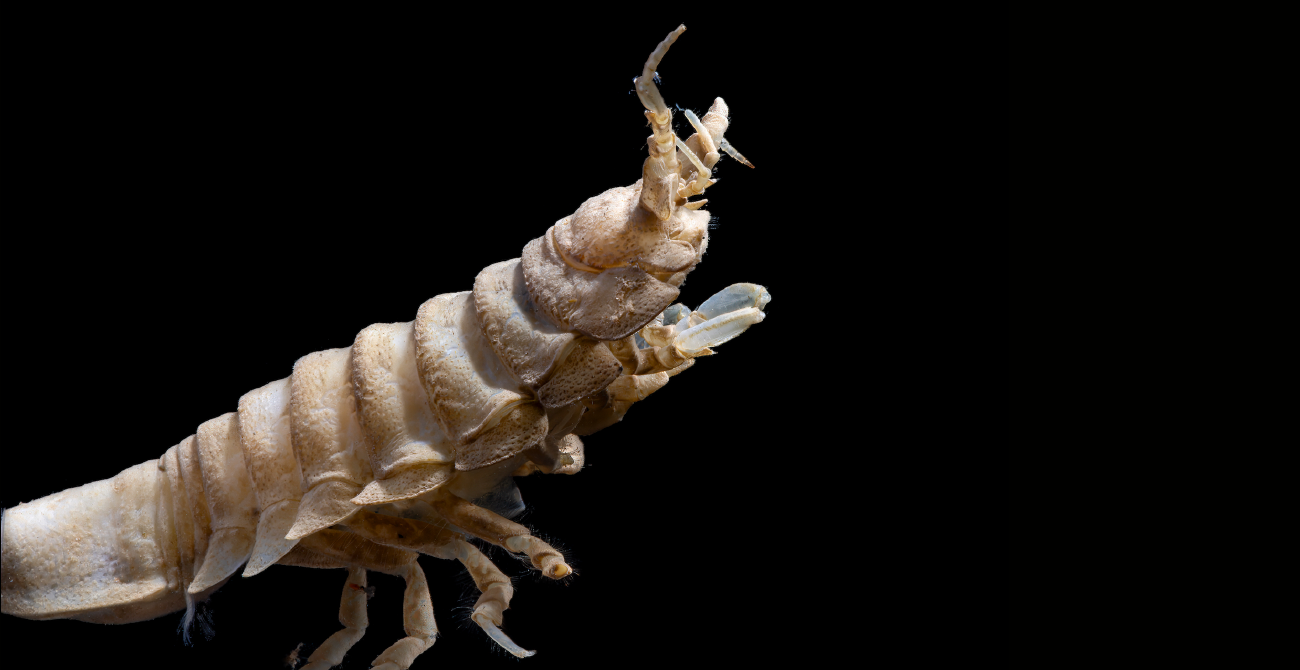
First Footage of Live Juvenile Colossal Squid – filmed on the Ocean Census expedition to the South Sandwich Islands

Publication
In an astounding moment for ocean science, a juvenile Mesonychoteuthis hamiltoni—the elusive colossal squid—has been captured alive on camera for the first time in its natural habitat.
The footage, filmed at a depth of 600 metres (1968 feet) near the South Sandwich Islands, in the South Atlantic Ocean, marks a historic milestone in deep-sea exploration and species discovery.
Sighting during Ocean Census expedition
The sighting was made during the Ocean Census GoSouth: Searching for New Species in the South Sandwich Islands 35-day research mission that brought together The Nippon Foundation-Nekton Ocean Census, Schmidt Ocean Institute (SOI), GoSouth (University of Plymouth, British Antarctic Survey, and GEOMAR), and the Government of South Georgia and the South Sandwich Islands (GSGSSI).
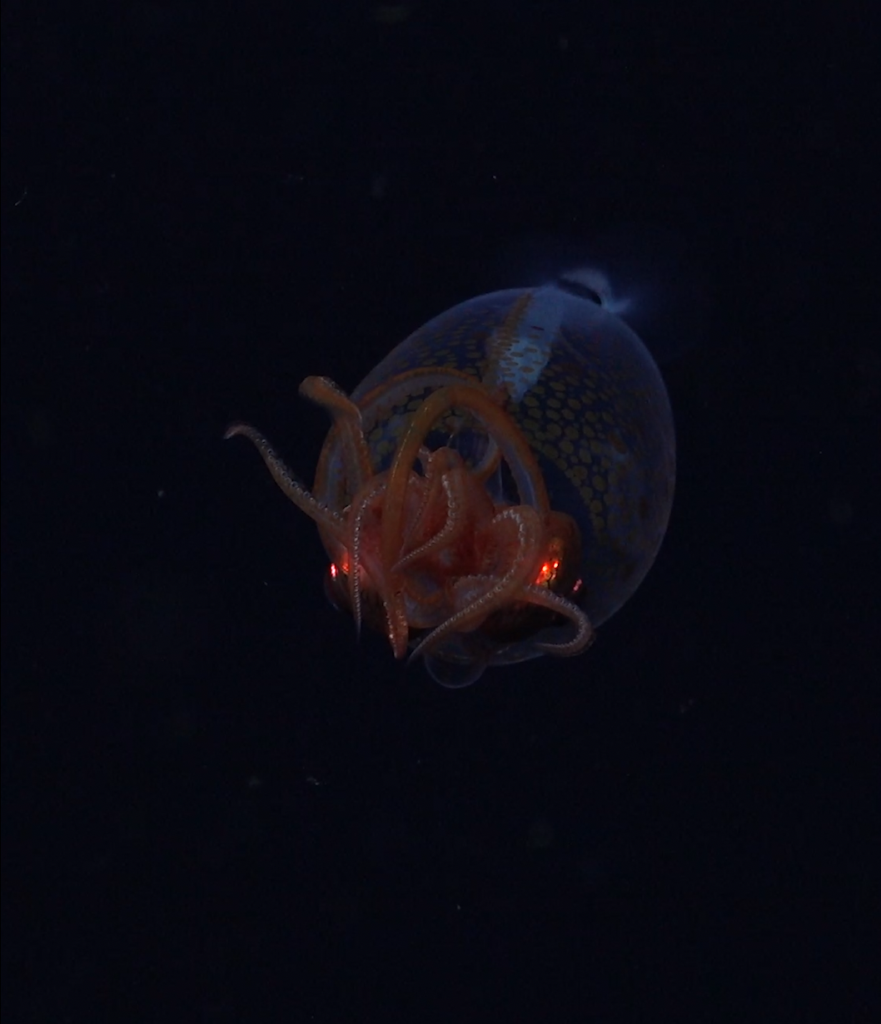
First in situ Footage
Using SOI’s (ROV) SuBastian, on board the R/V Falkor (too), the international team recorded the translucent juvenile squid—estimated at 30 cm long—gliding through the depths of the South Atlantic Ocean. On the hundredth anniversary of the species being first scientifically described.
“It’s exciting to see the first in situ footage of a juvenile colossal and humbling to think that they have no idea that humans exist,” said Dr. Kat Bolstad of the Auckland University of Technology, one of the independent scientific experts the team consulted to verify the footage.
“For 100 years, we have mainly encountered them as prey remains in whale and seabird stomachs, and as predators of harvested toothfish.”
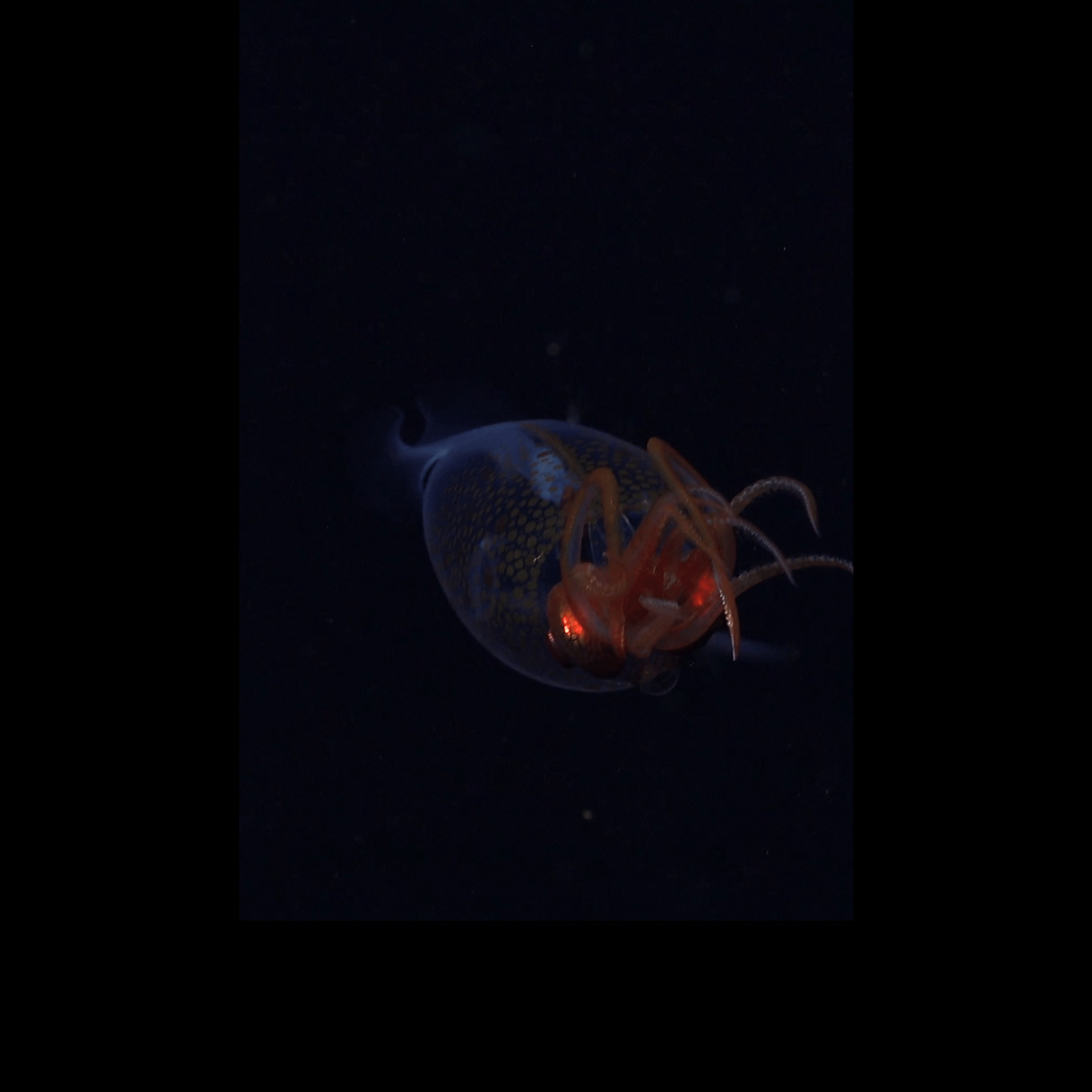
“It’s incredible that we can leverage the power of the taxonomic community through R/V Falkor (too) telepresence while we are out at sea. The Ocean Census international science network is proud to work together to accelerate species discovery and expand our knowledge of ocean life.”
– Dr. Michelle Taylor of the University of Essex – Principal Investigator for the South Sandwich Island Expeditions

The Heaviest Invertebrate on the Planet
Colossal squid are estimated to grow up to seven meters (22 feet) in length and can weigh as much as 500 kilograms (1100 lbs), making them the heaviest invertebrate on the planet.
Little is known about the colossal squid’s life cycle, but eventually, they lose the see-through appearance of the juveniles.
Dying adults have previously been filmed by fishermen, but have never been seen alive at depth.

The Importance of a Global Alliance
To date, the Schmidt Ocean Institute’s ROV SuBastian has captured the first confirmed footage of at least four squid species in the wild, including the Spirula spirula (Ram’s Horn Squid) in 2020 and the Promachoteuthis in 2024, with one more first sighting yet to be confirmed.
This first live glimpse opens a new chapter in our knowledge of deep-sea ecosystems, highlighting the importance of a global alliance set out to explore and further understand the ocean—our planet’s least-known frontier.
Find out more about the expedition
All image credits: Schmidt Ocean Institute
Join the census
An alliance of scientists, governments, marine research institutes, museums, philanthropy, technology, media and civil society partners.
